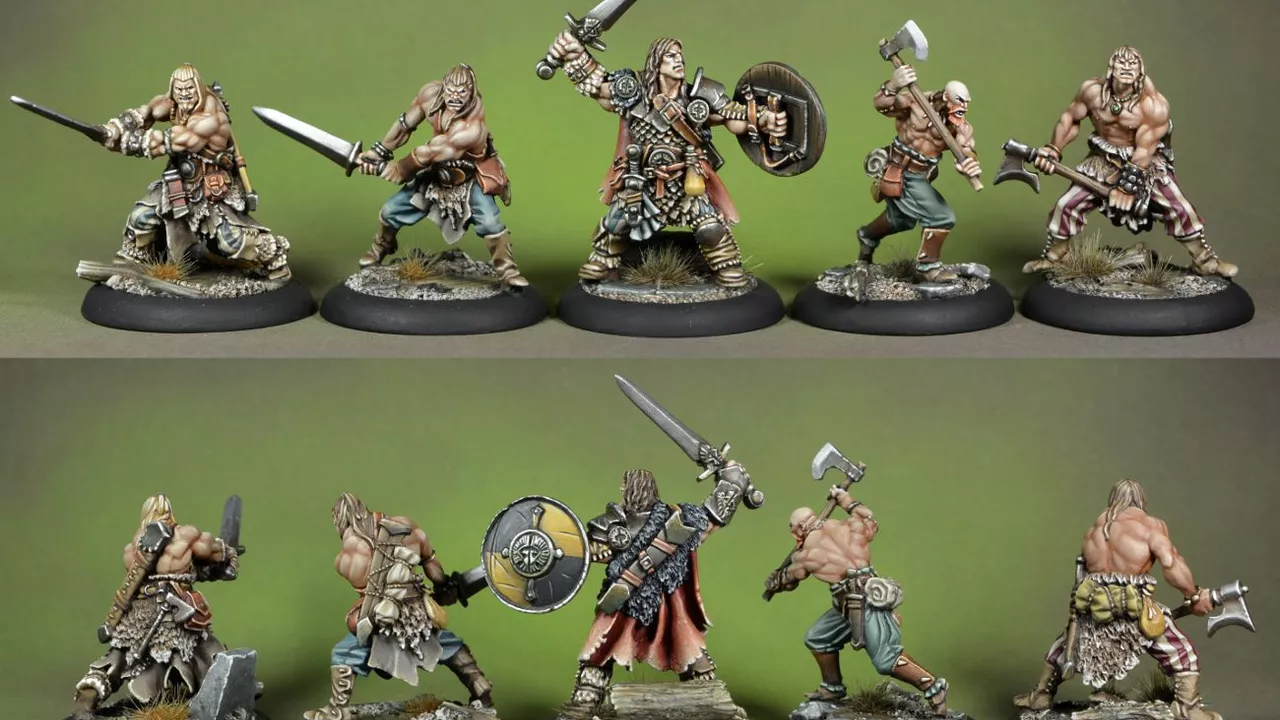The Genesis of Warhammer Miniatures
Once upon a time, in the land of board games and role-play, Warhammer miniatures were brought to life, and oh boy, what a fascinating journey it has been. As your friendly neighborhood blogger, I'm here to delve into the nuts and bolts, or perhaps more fitting, the plaster and plastic, of these beloved figurines.
There's something magically tangible about these miniatures. It's like having a fantasy novel leap right off the page onto your tabletop, except you get to play god, deciding their fate in the vast Warhammer universe. The thrill of charging your warriors into the battlefield, or leading a team of heroic Space Marines into unknown territories can send shivers up the spine of every fantasy enthusiast like me (and presumably you as well). However, have you ever wondered what these fantastic toys are made of? Well, no magic spell is involved, I assure you, but there is a lot of intricate craftsmanship.
The Epitome of Craftsmanship
Moulded from dreams and brought to life in the form of plastic, metal, and resin, your favorite Warhammer characters have quite a materialistic tale to narrate (No offence, but it ain't a fairy tale!). Among the earliest, and even some later models, were cast from lead for that real taste of battlefield mettle. Kidding aside, this was largely due to the material's malleability, permitting extraordinary detail, and substantial weight, imparting a desirable 'heft' to the figurines.
However, concerns about the health implications of lead led to its phasing out and the introduction of white metal as the dominant material. Its relatively soft texture maintained the intricacy of the miniatures while significantly reducing health risks. Phew, we are safe holding these little warriors!
Advancements in material science led to the emergence of plastic as the primary raw material for Warhammer figurines. Known for its durability and relative ease of production, plastic miniatures also have a significant advantage: customization. Miniatures are typically supplied in pieces that require assembly, allowing Warhammer enthusiasts wider creative license with their figurine assembly and design. Trust me, nothing matches the satisfaction of assembling your miniature army after meticulously following a labyrinthine instruction manual!
And we can't forget about resin, the new cool kid on the block. You might wonder, why resin right? Well, resin can capture more detailed sculpting than plastic, making it the ideal choice for intricate characters and models. Plus, resin carries low material costs, making it a cost-effective option for production. However, remember to treat your resin models with extra care as they can be less resilient to falls and impacts compared to plastic counterparts.
The Importance of Painting and Priming
Get your paints together, folks, because our painting journey is about to begin, quite literally. Building a Warhammer figurine is not just about sticking pieces together but also involves the creative adventure called painting. Yes, they're naked! And it's your job, nay, duty, to ensure they're appropriately garbed in colors befitting their race and faction.
Primers make the job much easier, providing a uniform, adherable surface that allows your paints to take hold. It's a stage that can determine the future of your artistry. Be smart, and choose wisely. There’s a rather amusing story from my early Warhammer days. I had a peculiar fondness for bright green primer because, as a naive young lad, I believed it gave orcs more authenticity! Suffice to say, not all my fellow gamers and painters shared my aesthetic! Let's say, I learned my lesson and now, I stick to the 'common sense' colors.
And for the painting itself, the sky's the limit. There's an almost zen-like pleasure in layering and texturing your figures, softly stroking every nook, cranny and armor panel with your brushes of varying sizes. The choice of paints is equally important here, with acrylic paints often emerging as the favorite choice for many miniature painters due to their ease of application and cleanup. Remember, each stroke of the brush represents a stroke of your creativity. So, be artful, and let your imagination run wild.
Some Tips and Tricks to Keep in Mind
As a passionate Warhammer-er (Is that the term?), I have collected a bevy of tips and tricks over the years. First and foremost, patience is your greatest ally, my friends. Anyone can slap a coat of red over a miniature and call it a day, but that won't quite capture the subtlety of an armor highlight or the shading of a cloak's fold. Take your time, and your diligence will reflect in every detail of your miniatures.
Another fun tip is to use a wet palette when painting your miniatures. It will keep your paints wet and usable for a longer time, which is especially handy when mixing colors or maintaining a consistent color over multiple painting sessions. I can vouch for this method, having spent overly-long painting sessions trying to match a shade of purple that vanished faster than a velociraptor on roller skates!
When it comes to scale modeling like Warhammer, tools matter. Flush-cutting clippers, hobby knives, files, modeling putty, super-glue, the right brushes, even some toothpicks can make all the difference between a painted figure and an art piece. Remember, quality tools make quality works!
Lastly, but perhaps most importantly, remember to have fun! The joy of Warhammer is in the journey as much as the destination, and perhaps even more so. Treat each miniature as an opportunity to learn, to grow, to express your creativity, and to be a part of this amazing Warhammer community!
So, there you have it folks. The secrets revealed, the magic unbottled. I, Roland, am signing off now to start painting a new regiment of Blood Angels. May your brushes be swift and your armor devoid of unsightly mold lines!
